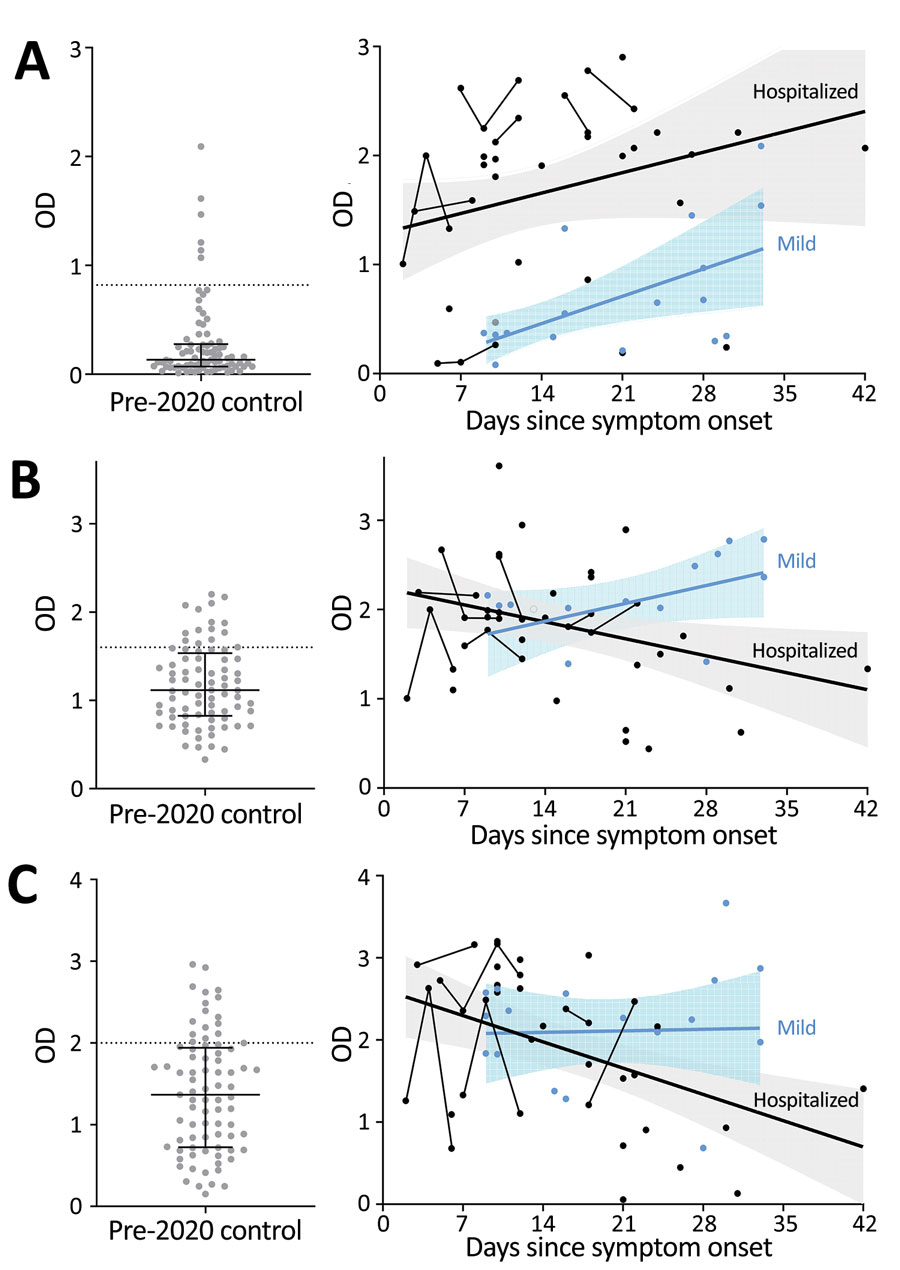Volume 26, Number 12—December 2020
Dispatch
Antibody Profiles According to Mild or Severe SARS-CoV-2 Infection, Atlanta, Georgia, USA, 2020
Figure 1

Figure 1. Serologic assay results for study participants with coronavirus disease (COVID-19), Atlanta, Georgia, USA, 2020. Levels of IgG against the receptor-binding domain (RBD) of the spike protein subunit S1 (A), IgM against S1 (B), and IgM against envelope protein (C) were analyzed for hospitalized patients with severe COVID-19 (black circles) and patients who had recovered from mild COVID-19 (blue circles) according to time from symptom onset. Levels in pre-2020 HC participants (gray circles) are shown for comparison; dotted lines represent optimal threshold levels for receiver operating characteristic curve analysis. Best fit lines for relationships between time since symptom onset and antibody levels were calculated separately for hospitalized participants and participants with mild COVID-19. OD, optical density.